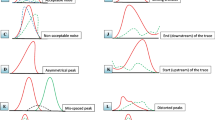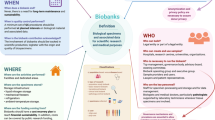Abstract
Introduction
Detection of pathogenic variants in hereditary breast and ovarian cancer-related breast cancer type 1 and type 2 susceptibility proteins (BRCA1/2) genes is an effective strategy in cancer prevention and treatment. Some ethnic and geographical regions show different BRCA1/2 mutation spectrum and prevalence. In Italy, elucidation of founder effect in BRCA1/2 genes can have an impact on the management of hereditary cancer families on a healthcare system level, making genetic testing more affordable and cost effective in certain regions.
Methods
The purpose of this paper is to develop a rapid, low-cost, high-throughput single-tube technology for genotyping the Italian founder mutation c.4964_4982del19 (rs80359876) in the BRCA1 gene, starting from peripheral blood and/or buccal swab DNA.
Results
Heterozygote samples for c.4964_4982del19 variant were easily and unambiguously identified by the altered shape of the melting curves and were clearly distinguished by a change in melting temperature that differed by approximately 5 °C. The same results were obtained both with DNA from peripheral blood than buccal swab.
Conclusions
We provide evidence about application of high-resolution melting analysis (HRMA) in unambiguously genotyping of the founder BRCA1 c.4964_4982del19 variant (rs80359876) in individuals from the Calabria region of Italy. In fact, HRMA was confirmed to be particularly suitable for the identification of BRCA1 c.4964_4982del19 variant, making this approach useful in clinical molecular diagnostics.


Similar content being viewed by others
References
Ford D, Easton DF, Stratton M, Narod S, Goldgar D, Devilee P, et al. Genetic heterogeneity and penetrance analysis of the BRCA1 and BRCA2 genes in breast cancer families. The Breast Cancer Linkage Consortium. Am J Hum Genet. 1998;62(3):676–89.
Szabo CI, King MC. Population genetics of BRCA1 and BRCA2. Am J Hum Genet. 1997;60(5):1013–20.
Minucci A, Scambia G, Santonocito C, Concolino P, Canu G, Mignone F, et al. Clinical impact on ovarian cancer patients of massive parallel sequencing for BRCA mutation detection: the experience at Gemelli hospital and a literature review. Expert Rev Mol Diagn. 2015;15(10):1383–403.
Capoluongo E. BRCA to the future: towards best testing practice in the era of personalized healthcare. Eur J Hum Genet. 2016;24(Suppl 1):S1–2. doi:10.1038/ejhg.2016.92.
Janavičius R. Founder BRCA1/2 mutations in the Europe: implications for hereditary breast-ovarian cancer prevention and control. EPMA J. 2010;1(3):397–412.
Konecny GE, Kristeleit RS. PARP inhibitors for BRCA1/2-mutated and sporadic ovarian cancer: current practice and future directions. Br J Cancer. 2016;115(10):1157–73.
Nedelcu R, Liede A, Aubé J, Finch A, Kwan E, Jack E, et al. BRCA mutations in Italian breast/ovarian cancer families. Eur J Hum Genet. 2002;10(2):150–2.
Baudi F, Quaresima B, Grandinetti C, Cuda G, Faniello C, Tassone P, Barbieri V, et al. Evidence of a founder mutation of BRCA1 in a highly homogeneous population from southern Italy with breast/ovarian cancer. Hum Mutat. 2001;18(2):163–4.
Russo A, Calò V, Agnese V, Bruno L, Corsale S, Augello C, et al. BRCA1 genetic testing in 106 breast and ovarian cancer families from Southern Italy (Sicily): a mutation analyses. Breast Cancer Res Treat. 2007;105(3):267–76.
Jiang Y, Turinsky AL, Brudno M. The missing indels: an estimate of indel variation in a human genome and analysis of factors that impede detection. Nucleic Acids Res. 2015;43(15):7217–28.
Minucci A, Canu G, Concolino P, Guarino D, Boccia S, Ficarra S, et al. DNA from buccal swab is suitable for rapid genotyping of angiotensin converting enzyme insertion/deletion (I/D) polymorphism. Clin Chim Acta. 2014;20(431):125–30.
Montgomery JL, Sanford LN, Wittwer CT. High-resolution DNA melting analysis in clinical research and diagnostics. Expert Rev Mol Diagn. 2010;10(2):219–40.
Minucci A, Concolino P, Giardina B, Zuppi C, Capoluongo E. Rapid UGT1A1 (TA)(n) genotyping by high resolution melting curve analysis for Gilbert’s syndrome diagnosis. Clin Chim Acta. 2010;411(3–4):246–9.
Er TK, Chang JG. High-resolution melting: applications in genetic disorders. Clin Chim Acta. 2012;24(414):197–201.
Wallace AJ. New challenges for BRCA testing: a view from the diagnostic laboratory. Eur J Hum Genet. 2016;24(Suppl 1):S10–8.
Ossa CA, Torres D. Founder and Recurrent Mutations in BRCA1 and BRCA2 Genes in Latin American Countries: state of the art and literature review. Oncologist. 2016;21(7):832–9.
Paul A, Paul S. The breast cancer susceptibility genes (BRCA) in breast and ovarian cancers. Front Biosci (Landmark Ed). 2014;1(19):605–18.
Miller RE, Ledermann JA. The status of poly (adenosine diphosphate-ribose) polymerase (PARP) inhibitors in ovarian cancer, part 1: olaparib. Clin Adv Hematol Oncol. 2016;14(8):619–27.
Caligo MA, Ghimenti C, Cipollini G, Ricci S, Brunetti I, Marchetti V, et al. BRCA1 germline mutational spectrum in Italian families from Tuscany: a high frequency of novel mutations. Oncogene. 1996;13:1483–8.
Malacrida S, Agata S, Callegaro M, Casella C, Barana D, Scaini MC, et al. BRCA1 p.Val1688del is a deleterious mutation that recurs in breast and ovarian cancer families from Northeast Italy. J Clin Oncol. 2008;26(1):26–31.
Palmieri G, Palomba G, Cossu A, Pisano M, Dedola MF, Sarobba MG, et al. BRCA1 and BRCA2 germline mutations in Sardinian breast cancer families and their implications for genetic counseling. Ann Oncol. 2002;13(12):1899–907.
Caleca L, Putignano AL, Colombo M, Congregati C, Sarkar M, Magliery TJ, et al. Characterization of an Italian founder mutation in the RING-finger domain of BRCA1. PLoS One. 2014;9(2):e86924.
Gundry CN, Vandersteen JG, Reed GH, Pryor RJ, Chen J, Wittwer CT. Amplicon melting analysis with labeled primers: a closed-tube method for differentiating homozygotes and heterozygotes. Clin Chem. 2003;49(3):396–406.
Author information
Authors and Affiliations
Corresponding authors
Ethics declarations
Conflict of interest
The authors (AM, MDB, EDP, LG, CS, PC, FM and EC) declare they have no competing interests.
Funding
No funding to declare.
Ethical approval and informed consent
The study was performed ensuring compliance of human studies with the Helsinki Declaration.
Additional information
An erratum to this article is available at http://dx.doi.org/10.1007/s40291-017-0273-0.
Rights and permissions
About this article
Cite this article
Minucci, A., De Bonis, M., De Paolis, E. et al. High Resolution Melting Analysis is Very Useful to Identify Breast Cancer Type 1 Susceptibility Protein (BRCA1) c.4964_4982del19 (rs80359876) Founder Calabrian Pathogenic Variant on Peripheral Blood and Buccal Swab DNA. Mol Diagn Ther 21, 217–223 (2017). https://doi.org/10.1007/s40291-017-0262-3
Published:
Issue Date:
DOI: https://doi.org/10.1007/s40291-017-0262-3




